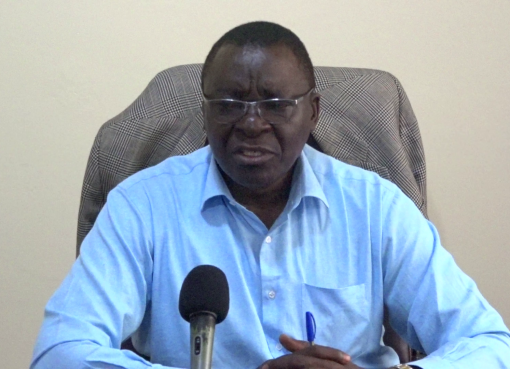Fish farmers in Kirinyaga County have received training on the breeding of Catfish, Tilapia, and ornamental fish in an initiative geared towards increasing fish production in the county as well as national food security.
Kirinyaga, one of the agricultural counties, is known for producing rice from the expansive Mwea Irrigation Scheme, which is the largest producer in the country.
At the Ornamental Aquafarm in Kangu, Mwea East sub-county, the farmers’ training involved practical lessons of extracting eggs from the females, fertilisation, and incubation of the fingerlings to ensure maximum production.
Stanley Mworia, CEO of the Aquaculture Association of Kenya, said that the farmers’ training is aimed at improving fish production using various technologies that include promoting production of catfish fingerlings, the monosex tilapia, as well as teaching them how to formulate their own fish feeds and also focusing on value addition of the fish after they are harvested to fetch more money for the farmers.

“We are doing trainings in collaboration with the programme called Technologies for African Agriculture Transformation, which is aiming at improving fish production. We want to teach our farmers how to formulate their own fish feeds and also focus on value addition,” Mworia said.
James Bundi, one of the trainers, noted that they are also training farmers on using the various new technologies, such as aquaponics, where farmers can use the same water for fish farming and also for other agricultural uses.
“We have established technologies that really try to address issues to do with climate change that relate to water sources quantity-wise. What the world is doing is establishing systems that capitalise on low water quantity, and these are systems like aquaponics systems,” Bundi said.
Bundi added that in the wake of changing climatic conditions that have led to the dwindling of water resources, there is a need for the farmers to embrace new technologies in farming that will help them save water and maximise production.
“You can actually measure and focus on technology and be able to produce fish, and currently we have seen farmers here in Kenya and particularly here in Kirinyaga, who have adopted technology that focuses on maximisation of nutrients from scarce water and also the water reuse system where we maximise production, and in the same system you can actually use that water to grow vegetables and it is taken back into the system,” he added.
He noted that the training will go a long way in impacting knowledge on the farmers and especially the youths to take up farming as an economic activity.
“We are excited because farmers have really adopted fish farming in Kirinyaga, and we are glad that considering we have aquaculture association of Kenya that takes the leads in organising farmers in Kenya in collaboration with both the national government and the county governments, we are partners, and we have really acted upon to once making sure that our farmers get trained so that even as they invest in fish farming, all of them have the knowledge,” he said.
Margaret Karimi, farmer and training beneficiary, said they have done training on catfish breeding and tilapia breeding and are still continuing with the training on ornamental fish breeding.
She noted in the past they have done other things wrongly, but from the knowledge they receive it will improve the production. The fisheries graduate who is in the aquaculture industry, doing fish farming as a full-time job, urges other youths to embrace fish farming as a source of self-employment, employ others, and provide food security.
By Mutai Kipngetich




